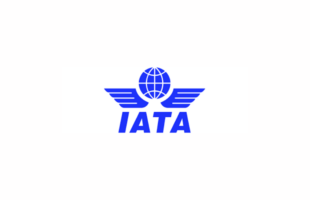Global trade seems to be getting its groove back. Despite slowing world trade, IATA’s senior economist yesterday projected moderate acceleration; with 2017 already off to a strong start in terms of air cargo volumes.
Speaking at IATA’s World Cargo Symposium, George Anjaparidze said that structural and cyclical trade factors could bode well for the industry. On the structural side, sectors that rely on air cargo are performing better than average. Anjaparidze cited the example of the European Union, where both the general economy and air cargo have outperformed global averages.
Increase in cargo Volume
German manufacturing for example, registered a strong 2016. At the start of the fourth quarter, Germany’s economy gained momentum as factory activity grew at the fastest pace in almost three years. That had real implications for forwarders, carriers, and other stakeholders. In early 2017, IATA announced that European airlines posted a 16.4 percent year on- year increase in freight demand in December and a capacity rise of 5.9 percent. The results boosted cargo volumes for 2016 by 7.6 percent, which IATA noted was the largest increase among all regions, accounting for almost half of the total global annual increase in freight demand.
On the cyclical side, Anjaparidze noted that air cargo stood to gain from improvement in emerging market growth, led by China. “Air cargo serves as a solution in times of disruption,” he said, in reference to the Hanjin disruption of last year, which had a lag impact on growth in the fourth quarter.
Overall, air cargo recovered and grew in Q2 2016, continuing the upswing into the third and fourth quarters as Asian economies picked up steam.
Yet, Anjaparidze noted that capacity in 2016 outstripped demand, due to continued delivery of passenger wide bodied, where belly capacity grew at 3.6 times that of freighter capacity in the same year.
All things considered, IATA’s economic projection for the industry is one of cautious optimism, with risks tilting to the upside. This projection is substantiated by a strong US economy, resilient underlying drivers of air cargo, such as strong export orders and rising consumer confidence, and an impending US economic stimulus on which the current Trump administration campaigned.
Review, refine & Reengineer
Glyn Hughes, IATA’s Global Head of Cargo, took the stage to present the year 2016 in review, during which air cargo decisively improved its performance, outpacing global growth.
Hughes listed several key IATA developments, starting with cargo safety. IATA made safe transportation of volatile batteries a major platform over the year, engaging with partners and pressuring governments to enforce safety standards. Lack of regulation and enforcement in the lithium-ion battery supply chain poses serious security threats, IATA warned in a letter to Ministers of Trade, Industry and Transport, and Directors of Civil Aviation of the world’s largest lithium battery manufacturing and export countries.
Another important development Hughes highlighted was an IATA announcement in mid-2016 that it had joined forces with freight forwarding advocacy group FIATA to review, refine, and reengineer the current Cargo Agency Program to develop a new and modernised Program – IATAFIATA Air Cargo Program (IFACP). Hughes noted that this cooperation was aimed at developing customer centric relationships, “It’s about bringing in the regions,” he said.






